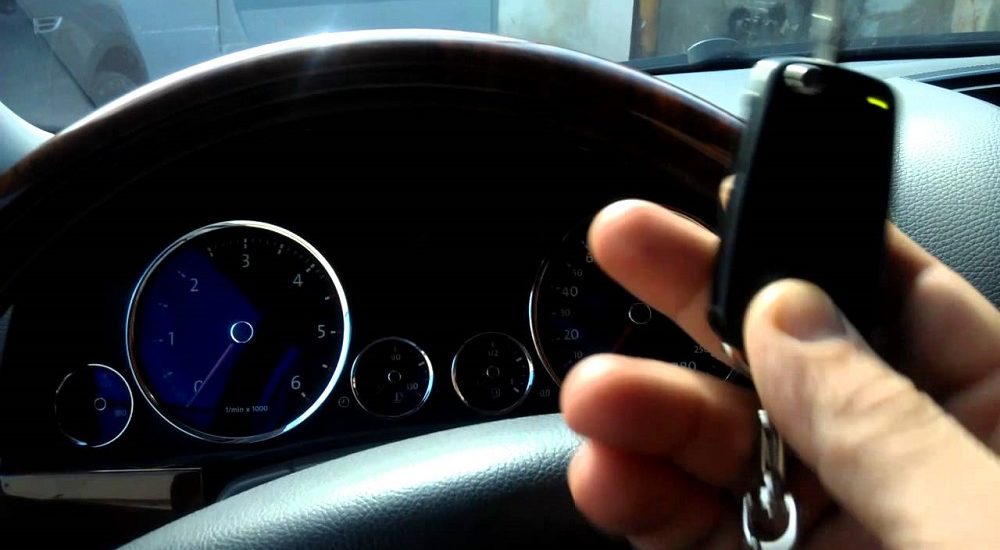Immobiliser is an electronic anti-theft security device fitted to your car which helps to securely lock some of its modules or another transport. The primary task of immobiliser is to prevent other people from driving your car as well as while attempting to hijack it. The main function of this device is to lock the engine in case of theft. This article speaks on the types of immobilisers and the ones you can trust your car.
What’s the difference between immobiliser and car alarm?
As you can guess from its name, a car alarm informs a car owner of a hijack attempt (i.e. signals of touch, kicks, attempts to steal, etc.). Unlike car alarms, immobiliser does not signal you of anything, however, prevents ignition spark or (optionally) blocks the engine within a short time after hijacking. The idea of the latter is that by that time, a thief has already left an isolated place of hijacking and found himself on the street. Practice shows that a criminal leaves a “disabled” car where it “broke down”.
If a car alarm quickly gives itself away, an immobiliser is quite difficult to find. There are models which consist of several (up to 10) microdevices either controlled via car wiring and the high-frequency signals or simply embedded into the fuse box. Even if a criminal finds a device and either destroys it or disable, all parts will still remain blocked. Sometimes it causes troubles for a driver who owns a car with security system.
Many insurance companies take out insurance against hijacking only if it is fitted with immobiliser. However, the best solution is when your car is fitted with both alarm and immobiliser. They complement each other if a criminal makes attempts to hijack your car.
Immobiliser structure
Immobiliser consists of three components: control unit, relay unit and key. The control unit is a think-tank of the device. It provides a device activation signal. A relay unit breaks electric circuit. As a result, electromagnetic relays immobilize a car. Finally, the last control element, key are always with the driver. The system is activated with the key that has a special chip. The chip is sometimes placed in the credit-type card or key fob.
Types of immobilisers
Immobilisers can be manually or electronically operated. However, the the first one gradually fall into oblivion while electronically operated come with a standard kit). Today’s immobilisers are divided into built-in (standard) or non-standard to be purchased separately. The latter are then installed by service technicians or even car owners.
Electronically operated immobilisers are activated by an electronic code key. To activate them, you don’t need to dial a code for device block. A driver carries either a key fob or a card (which resembles a credit one) in his pocket. They emit a signal and block the device in front of an owner. As soon as the latter moves away from the car, a device shall be automatically connected.
All immobilisers are activated automatically after a certain period within which a driver does not use a vehicle.
The idea of built-in immobiliser is that you can start the car only with “your own” key which is connected to the electronics of the specific car. Otherwise, you will fail to start the car.
Standard and non-standard immobilisers have the following functions:
- Parking theft protection (“immobilizer” function) and on the way hijacking protection (“Anti HiJack” function).
- Full compatibility with car electronics (standard CAN bus protocol support).
- PIN code authentication for the owner (a secret key combination).
- Engine block via a wireless pLine relay.
How to handle the issues if any?
Sometimes the immobiliser makes it impossible even for an owner to start the car. In this case, you should address service technicians. However, keep in mind that only after you have shown all documents that prove you are an owner of the car your immobiliser will be replaced.
If the key is lost, the code is deleted, you should somehow ignore the immobiliser, i.e. disable its functions in such a way as not to hinder the vehicle operation. To do so, you should install a special electronic device — emulator that ignores theft protection programs.
Nowadays many manufacturers do not issue cards with PIN code to the holders to reprogram immobiliser key. You should ask a manufacturer for a PIN code through an authorized dealer. This is a single-use password. As a result, if you lose a card with a PIN code or a key, you might consider the idea of purchasing immobiliser parts kit.
If you have no PIN code, service technicians may offer key registration for immobilisers via special computer hardware and software. You may also ask for a new key with built-in immobiliser as well as its duplicates in case there is more than one owner or just to have it in store.
There may be software failures. Then you should reprogram your immobiliser. A new key must be “flashed” in such a way that immobiliser perceives a signal sent by a new chip as “its own”. This service has different names, however, the idea is still the same: to make both immobiliser control unit and the new key meet. Though, it does not even have to be an ignition key. Indeed, that may be a key fob or card which serve as a key for immobiliser.

Whether your car is fitted with immobiliser or not, you are allowed to drive only with a driver’s license, and preferably an international one. If you still have no IDL, apply here on our website. As easy as A, B, C. Our IDL helps you to discover the whole world!

Published May 10, 2019 • 5m to read






